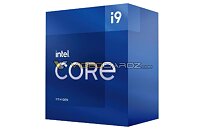Box Limited, a popular PC and electronic retailer in the United Kingdom, has ceased doing business—this follows
insider reports of Box Ltd. filing for administration last week. A few days ago, the company's web store was updated with a front page announcement that confirmed a total cessation of operations. The online store is still semi-functional (at the time of writing)—you can add items to your basket, but the checkout process automatically kicks you back to the site's main page. UK publication, eTeknix, had the inside track on Box's troubles—despite a very buoyant 2023: "Box Limited is one of the biggest PC and tech retailers in the UK, or at least… we thought they were. When Tactus bought them out last year for £100 million, it seemed like things were only on the up for Box, but according to our sources, things are looking pretty bleak for the UK retailer."
Last week's article elaborated further on problems behind-the-scenes: "Firstly, Box may be owned by Tactus, but are currently
being sued by their new owner for £18 million because they had allegedly over-inflated their value before they were bought out. That's a big no-no in the business world, obviously, and while I cannot confirm if that is true or not, as that's a matter for the courts to decide, it's fairly safe to assume that it has some bearing on their more recent predicament...Sources close to us, whom we cannot disclose, have informed us that Box Limited has submitted an administration application. Further sources have indicated to distributors of various hardware that "box is end of life" and that their insurance companies are recommending they do not send products to Box Limited. No point sending hardware to them if they're going into administration, as you would just be throwing money away… not a good business move." The
Tactus Group has a pretty large portfolio of UK retail presences, including: Chillblast, Horizon, Geo, and CCL Computers. The loss of Box.co.uk is certainly going to sting (following last year's £100 million investment) since their acquisition also covered several brick and mortar shops located in the UK Midlands.







































































